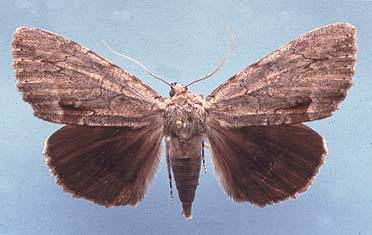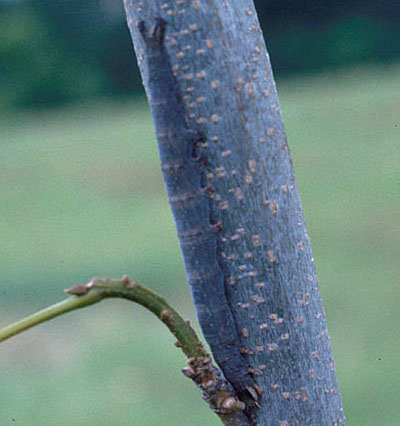Catocala angusi
Catocala angusi
kah-TOCK-uh-lahmAYNG-gus-eye
Grote, 1876

Catocala angusi
courtesy of James K. Adams, Georgia.
This site has been created by
Bill Oehlke.
Comments, suggestions and/or additional information are welcomed by Bill.
| TAXONOMY:
Superfamily: Noctuoidea
Family: Erebidae, Leach, [1815]
Subfamily: Erebinae, Leach, [1815]
Tribe: Catocalini, Boisduval, [1828]
Genus: Catocala, Schrank, 1802
|
DISTRIBUTION:
Catocala angusi, Angus' underwing,
(wingspan: 60-74mm) flies from Massachusetts unconfirmed and
Connecticut south to
Georgia west to
Arkansas and
Kansas and north to
Illinois and Michigan.
It has also been reported in
Indiana,
Iowa,
Kentucky,
Mississippi,
Missouri,
Nebraska,
New Hampshire,
New Jersey,
New York,
North Carolina,
Ohio,
Pennsylvania,
South Carolina,
Tennessee,
Virginia and
Wisconsin.
I suspect it is also present in West Virginia.
The dark dashes/streaks in basal area and anal area distinguish this
species. The reniform spot tends to have a light brown filling.
The hindwing fringe is black except for white region at the apex.
The form lucetta (left above) has a broad black band from the basal
area to the outer margin, broken only by the reniform and subreniform
spots.
FLIGHT TIMES AND PREFERRED FOOD PLANTS:
Catocala angusi are usually on the wing from July to October.
The Catocala angusi caterpillar shows a preference for
Carya species.
ECLOSION:
Adults eclose from pupae at soil surface.
SCENTING AND MATING:
Catocala angusi females
emit an airbourne pheromone and males use their antennae to track the
scent plume. There is considerable variation in forewing patterning from specimen
to specimen. Here is an almost totally unmarked specimen courtesy of
James K. Adams. The anal dash is still apparent.
|  |
EGGS, CATERPILLARS, COCOONS AND PUPAE:
Eggs are deposited on
tree bark in the fall and hatch the following spring.
Catocala angusi is probably one of the few
Catocala species regarded as a pest. I suspect the larvae
really do not do much damage, but any insects that feed on commercial
crops (like pecans) are generally unwanted.Image to the right courtesy of
H. C. Ellis, The University of Georgia, http://www.forestryimages.org/
Excellence of camouflage is much apparent in this image. The larva is often
referred to as the pecan underwing. |
 |
Larval Food Plants
Listed below are primary food plant(s) and alternate food plants.
It is hoped that this alphabetical listing followed by the common
name of the foodplant will prove useful. The list is not exhaustive,
although some species seem very host specific.
Experimenting with closely related foodplants is worthwhile.
Carya illinoinensis.....
Carya ovata
|
Pecan
Shagbark hickory
|
This page is brought to you by Bill Oehlke and the
WLSS. Pages are on space rented from Bizland. If you would like to become a "Patron of the Sphingidae/Catocala Sites", contact Bill.
Please send sightings/images to Bill. I will do my best to respond to requests for identification help.
Enjoy one of nature's wonderments: Live Saturniidae (Giant Silkmoth) cocoons.

|

To show appreciation for this site, click on the flashing
butterfly to the left, a link
to many worldwide insect sites. |




